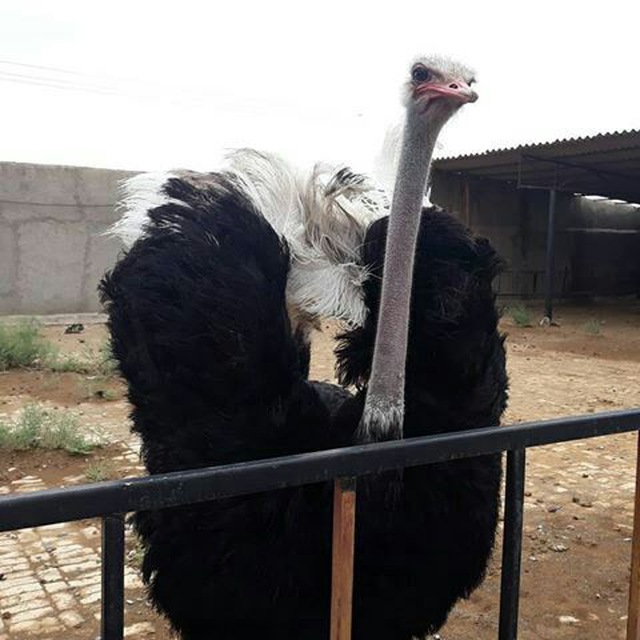A summary of tying and how to work with ostrich
Young and adult ostriches are big and strong and can hurt people by kicking and pushing. Factors such as the establishment of the center of gravity in the upper parts of the body, heavy weight and the special condition of the bird’s muscles can cause damage to the bird if tied incorrectly. During the breeding season, males protect their females’ territories and attack those who enter their territory. Ostriches are sensitive to some specific injuries during work, which include:
– Broken wing due to incorrect binding
– Fracture of the leg bones (tibiotarsus) and sprain of the ankle joint (tarsometatarsus) while catching a bird
– Deviation of the neck vertebrae
Trachea compression and feeling of suffocation and impatience and stress due to holding the neck
– Proneal nerve damage if adult ostriches are laid on their side.
Catching and tying ostriches requires a cloth bag to cover the head and a skilled and trained tying person. Also, a box or tray is needed to keep large ostriches, which unfortunately does not exist in most farms. The use of chemical binders and pre-anesthetic or sedative drugs, as well as in more sensitive cases, anesthetic drugs are necessary for performing physical examinations and surface surgery.
In the case of newly hatched chicks and chicks up to 30 days old, they can be lifted and held by holding the base of the neck and placing the other hand under the abdomen. Growing birds weighing between 18 and 45 kg can be bound by placing the bird between the legs of the binding person and holding its chest area by hand. Birds of this size can be easily transferred to the transport trolleys by an operator.
There are several safe methods of capture and binding in the case of fatlings and adults. The choice of a specific method depends on the purpose of capturing the bird, i.e. transportation, examination or administration of drugs. Usually, three workers are needed to catch and tie adults. Catching and tying a bird depends on the bird’s behavioral state, reproductive status, and environmental conditions. If the bird is calm, you can hold the neck by holding the skin on the back of the head and then lower the neck so that it is parallel to the ground. . You can also use the crooked head rod with extreme caution so as not to harm the bird. Covering the head is a good way to restrain the bird during a physical examination, microchipping, or medication administration. Before catching the animal, the perpetrator should put his hand inside the cloth bag and after catching the head and neck, grab the tip of the animal with the same hand that is inside the bag and pull the bag from his elbow over the animal’s head and neck. For long procedures and painful cases, it is better to use a special box.
Avoid grabbing the bird’s wings to avoid breakage. The ostrich humerus is one of the aerial bones and breaking it will cause subcutaneous emphysema in this area. Fracture of the arm can lead to cellulitis, swelling and infection of the air sacs.
This post is written by avazporr
